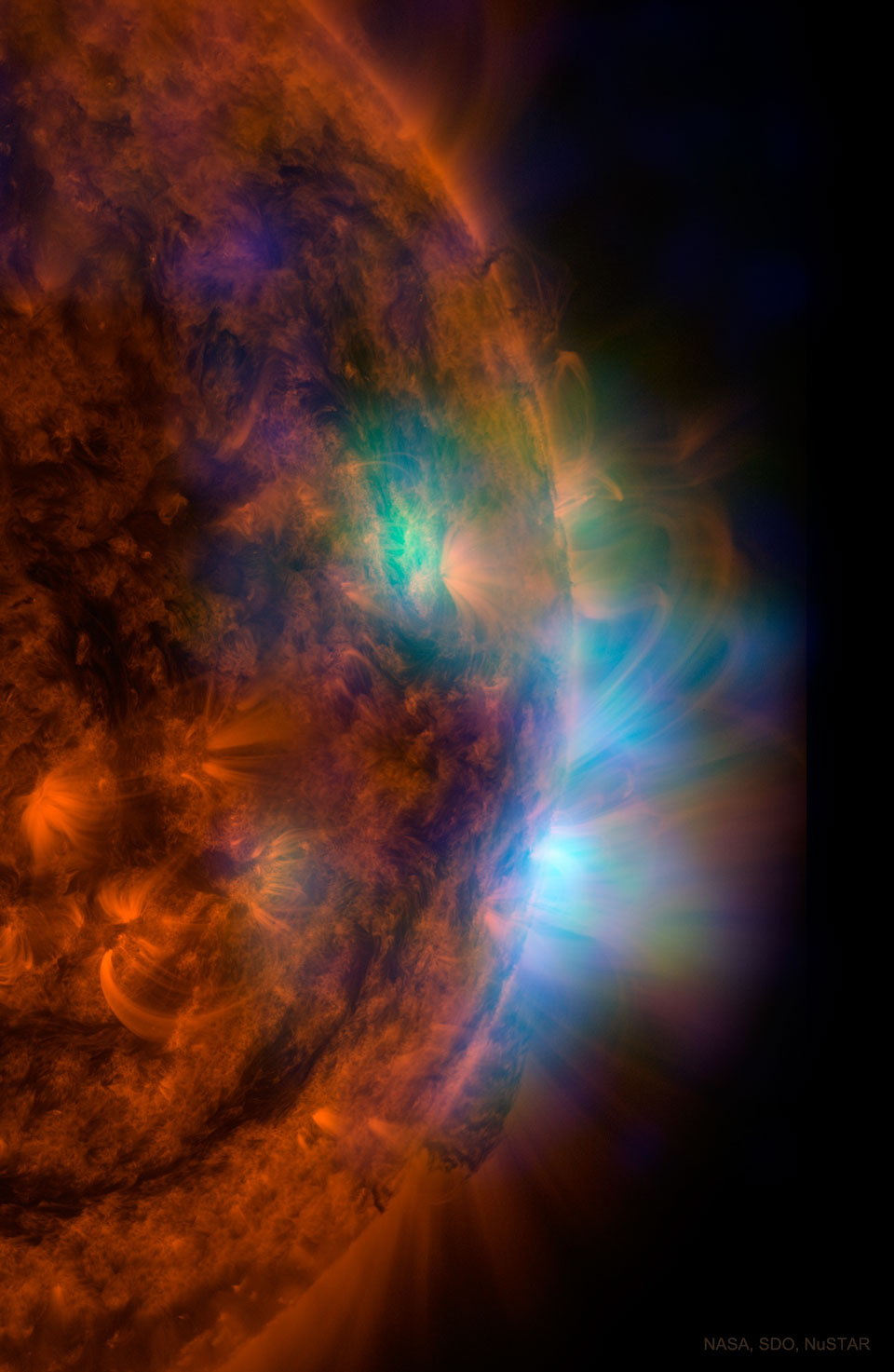2021年11月23日
The Sun in X-rays from NuSTAR
Image Credit: NASA, NuSTAR, SDO
Explanation: Why are the regions above sunspots so hot? Sunspots themselves are a bit cooler than the surrounding solar surface because the magnetic fields that create them reduce convective heating. It is therefore unusual that regions overhead — even much higher up in the Sun’s corona — can be hundreds of times hotter. To help find the cause, NASA directed the Earth-orbiting Nuclear Spectroscopic Telescope Array (NuSTAR) satellite to point its very sensitive X-ray telescope at the Sun. Featured here is the Sun in ultraviolet light, shown in a red hue as taken by the orbiting Solar Dynamics Observatory (SDO). Superimposed in false-colored green and blue is emission above sunspots detected by NuSTAR in different bands of high-energy X-rays, highlighting regions of extremely high temperature. Clues about the Sun’s atmospheric heating mechanisms come from NuSTAR images like this and shed light on solar nanoflares and microflares as brief bursts of energy that may drive the unusual heating.
Tomorrow’s picture: stellar sisters
核分光望远镜拍摄的X波段太阳
影像提供: NASA, NuSTAR, SDO
说明: 为何太阳黑子上方的区域会如此炽热?太阳黑子本身的温度比周遭之太阳表面低,因为形成黑子的磁场同时也阻碍了对流传热。因此,黑子上方的区域─包括更高层、温度高达数百倍的日冕层,才会显得如此不寻常。为了帮忙找出成因,美国国家航空航天局把位在轨道上的NuSTAR(核分光望远镜阵列)卫星之高灵敏X射线望远镜指向太阳。在这张主题照片里,太阳动态卫星(SDO)所拍摄的紫外光波段太阳数据(红渐层)之上,叠合着NuSTAR望远镜在不同高能X光波段所拍摄的蓝和绿假色影像,用以突显温度极高的区域。这张影像为解构太阳大气加热的机制提供线索,而未来拍摄的影像,或能找到假说认为可能是造成这种不寻常加热的奈闪焰及微闪焰的瞬时注能现象。
明日的图片: stellar sisters







